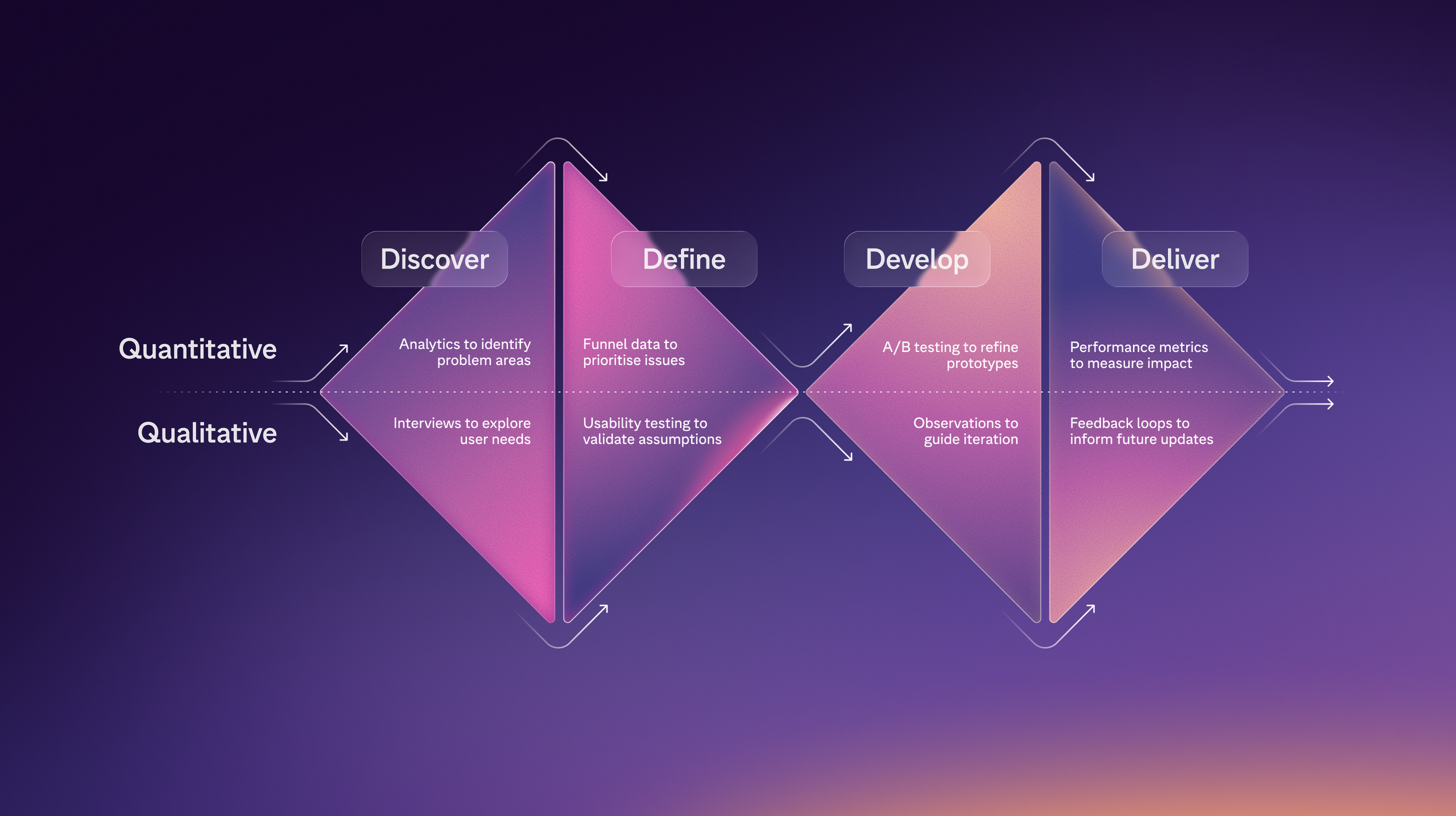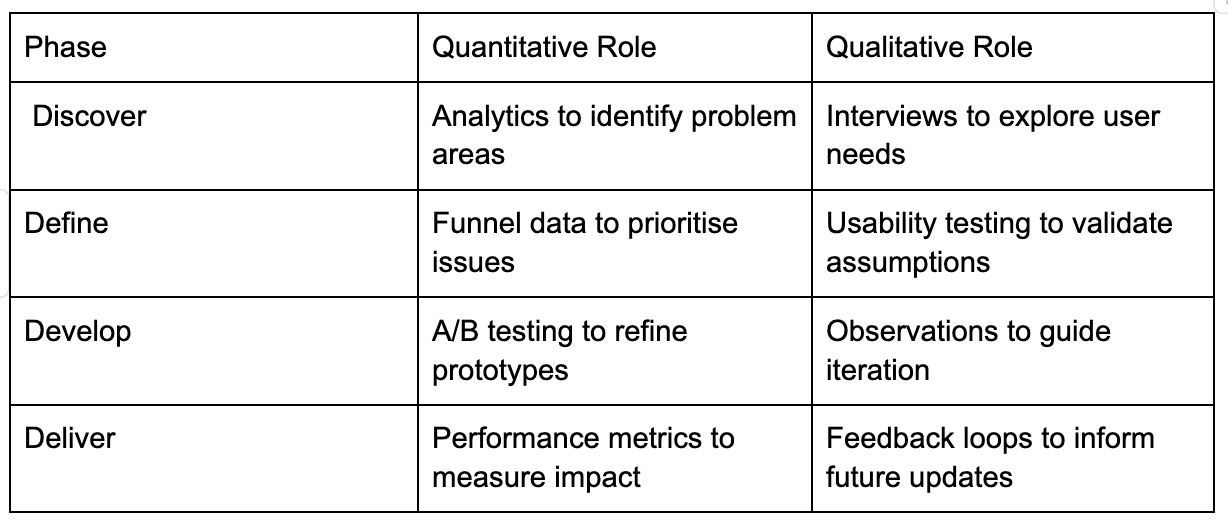
A/B testing has been a staple of digital optimisation for years, but now with the growth of AI-powered software and tools, it's become a blunt instrument.
Sure, it’s been helpful to give binary answers to questions like, “Which button converts better?” or “Does layout A outperform layout B?” Crucially though, it doesn’t tell you why.
That missing “why” is where innovation lies. You need to understand user motivations, frustrations, and context; otherwise you're limited to optimising what's already there (which may be flawed).
At evensix, we know that qualitative insight from real humans, combined with AI-powered analysis is the key to unlocking transformative UX.
Quantitative data: useful, but limited
Quantitative tools like A/B testing, heatmaps, and analytics are essential for validating decisions and tracking performance. They help teams optimise funnels, reduce bounce rates, and make data-driven choices with confidence.
Pros:
- Clear, measurable outcomes
- Fast feedback loops
- Scalable across large user bases
- Ideal for testing hypotheses and refining UI elements
But these tools are inherently reactive. They measure what’s already happening, not what could be. They don’t capture nuance — the subtle cues that reveal why users behave the way they do, or what they actually need.
Cons:
- Lack of emotional or contextual insight
- Can reinforce flawed assumptions
- Doesn’t explain user intent or frustration
- Optimises existing designs rather than challenging them
In short, quantitative data is great for validating a hypothesis, but if you don’t get the result you’re expecting, you’re back at square one.
Qualitative data: unlocking the ‘why’
To truly understand how users are interacting with a digital product, we need to treat them as humans and go beyond the numbers. Qualitative research methods uncover the mental models, pain points, and unmet needs that quantitative tools can’t reach.
User interviews
Speaking directly to users reveals how they think, what they expect, and where they struggle. These conversations often surface insights that would never appear in a heatmap, like confusion over terminology, emotional reactions to design, or unmet expectations.
Usability testing
Watching users interact with a product (even a prototype) exposes friction points, blind spots, and unexpected behaviours. It’s not just about what they do — it’s about how they do it, and what that reveals about their experience.
Contextual research
Observing users in their natural environment provides rich context. How do they use your product in real life? What distractions, habits, or workarounds shape their behaviour? This kind of insight is invaluable for designing solutions that truly fit into users’ lives.
Yes, qualitative research can be a lot more expensive, and it takes a lot longer. In Digital teams where answers are required quickly, the very idea of it can feel like a luxury to some. But that’s why it needs to be deployed appropriately at the right time(s) in your discovery process.
The Double Diamond: combining quant and qual
The Double Diamond framework (discover, define, develop, deliver) offers a structured way to integrate both quantitative and qualitative data throughout the design process.


By combining both types of data, teams can move from surface-level optimisation to deep, user-centred innovation.
AI’s Role in Modern UX Research
AI tools are increasingly bridging the gap between quant and qual. Natural language processing (NLP) can analyse interview transcripts at scale, surfacing themes and sentiment. Machine learning models can detect patterns in user behaviour that aren’t immediately obvious. And generative AI can help simulate user journeys or generate test scenarios based on real-world data.
At evensix, we’re exploring AI-powered tools like:
- Dovetail for qualitative research synthesis
- Hotjar and FullStory for behavioural analytics
- Maze for remote usability testing
- Sanity for structured content modelling
- Vercel and Next.js for rapid prototyping and performance optimisation
These tools help us move faster, dig deeper, and deliver experiences that are not only functional — but meaningful.
From Optimisation to Innovation
A/B testing will always have its place because it’s a powerful tool for refining what exists. Not to mention cheaper and more accessible to many. But if we want to build better, not just tweak, we need to understand users on a deeper level.
Qualitative data, supported by AI, gives us that understanding. It helps us design with empathy, test with purpose, and innovate with confidence. At evensix, we use this approach to create headless websites and apps that don’t just perform, they’re human-centred and intuitive.
Want to explore how qualitative insight and AI can elevate your UX strategy? Get in touch.
